- หน้าอำเภอ โยโกฮาม่าอันดับสูงที่สุด
- การใช้ชีวิตขั้นตอนในการดำเนินการ
- บ้านการใช้ชีวิต
- ขยะรีไซเคิล
- การแนะนำของศูนย์
- โรงงานการเผากำจัด
- การเยี่ยมชมโรงงาน
- Waste Incineration Plant Facility Overview
เป็นเนื้อหาหลักจากที่นี่
Waste Incineration Plant Facility Overview
วันที่ 24 เดือนสิงหาคมปีพ.ศ. 2563 วันที่ปรับปรุงครั่งสุดท้าย
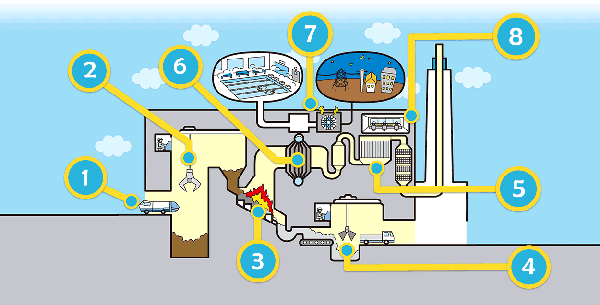
Waste Incineration Plant Facility Overview
Click on the Plant Facility Index to display descriptions and videos of the relevant facilities.
Platform 1
Garbage trucks dump the waste that they have collected into waste pits แบบ the platform, where it is temporarily stored.
Several hundred garbage trucks drive in and ข้างนอก of the platform every day, and the platform surveillance room monitors the area to ensure that there are no accidents and no unsuitable waste included.
The waste pit doors detect the arrival of the garbage trucks and open automatically.
The garbage trucks raise their rear containers and dump the waste directly into the waste pits แบบ the waste pit doors.
Vehicles with rear containers that cannot be raised have their waste removed manually, although this is carried ข้างนอก safely by first of all transferring it to dumping boxes and then dropping it into the pit down slides to make sure that workers are in no danger of falling into the pit, and it is also at that point that it is เป็นไปได้ to prevent unsuitable waste แบบ being dumped if it is discovered.
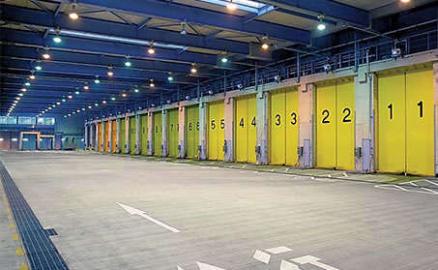
▲ Click to start the video. ( no audio )
Waste Pit and Waste Crane 2
The area in which the waste transported by garbage trucks is temporarily stored is known as the waste pit.
The waste cranes then pick up the waste and transfer it แบบ the waste pit to the incinerator.
The most important factor at this point is to make sure that the waste is mixed together to make it uniform before it is placed in the incinerator.
Reusable resources and non-combustible substances are carefully separated when waste is collected to ensure that only combustible waste is delivered to incineration plants as a basic principle, although this includes " difficulty burned" substances, such as household waste with high levels of moisture content, and " easily burned" substances, such as paper.
The waste cranes therefore agitate the waste together to make it uniform ( with waste agitators ) and ensure that it is easily burned.
The waste cranes are operated by qualified operators. Automatic operations are also carried ข้างนอก at nights and at other times when necessary, which means that the cranes are operated ceaselessly on a 24-hour basis.
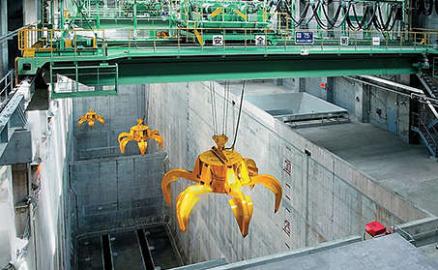
▲ Click to start the video. ( no audio )
Incinerator 3
The waste transferred into the incinerators acts as the fuel for incinerating it. Owing to this, once the incinerator has been started up and ignited, it requires no further fuel until it is shut down.
The incinerators also operate continuously at high temperatures of between 850 and 950 degrees Celsius, which eradicates all odors and cuts down on dioxins.
The air required for incinerating waste is taken in แบบ the waste pit, and the design makes sure that the odors emitted by the waste are not leaked outside.
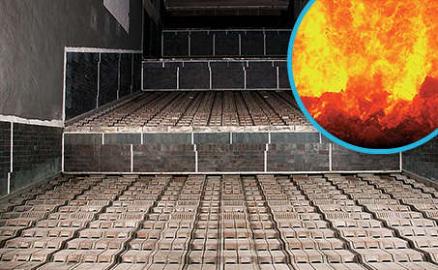
▲ Click to start the video. ( no audio )
Ash Pit and Ash Crane 4
The ash pit is where the ash produced during incineration is temporarily stored.
The ash that comes แบบ the incinerator is transferred to the ash pit on an ash conveyor, where it is stored.
The hazardous substances removed by the exhaust-gas treatment facility is also transferred on a different conveyor, treated with chemicals, etc., and each substance stored in the ash pit.
The ash cranes pick up the ash and ของบรรทุก it only ash-carrying trucks.
The ash loaded onto these trucks is then transported to the final disposal site.
เป็นไปได้ The final disposal site has limited space, and it is therefore necessary to thoroughly separate the waste to reduce its ปริมาตร so that the site can be efficiently used for as long as
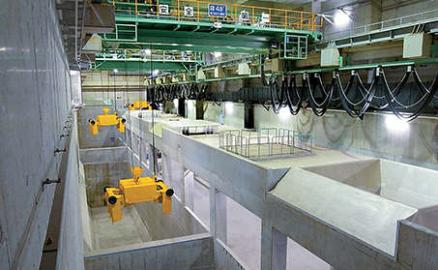
▲ Click to start the video. ( no audio )
Exhaust-Gas Treatment Facility 5
The exhaust-gas treatment facility is where the hazardous substances contained in the exhaust gas emitted during incineration are removed.
First of all, the exhaust gas is rapidly cooled in cooling towers to prevent dioxins แบบ recomposing.The exhaust gas is passed through a device known as the bug filter to remove the fine hazardous substances contained within the gas, and it is then treated with chemicals to remove the dioxins and other hazardous substances.
The hazardous substances that remain in the exhaust gas after this, are then removed with chemicals such as slaked lime, activated carbon and ammonia, etc.
The exhaust gas that has been treated in this way is finally emitted into the อากาศแบบ the smokestack.
Yokohama City manages exhaust gas at values that are more stringent that those laid down in the regulation standards enforced by law.
We also publicize the results of all measurements into exhaust gas properties, etc., after treatment to provide local residents with peace of mind.
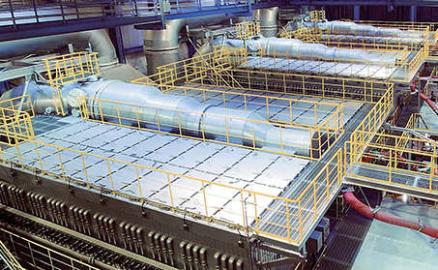
▲ Click to start the video. ( no audio )
Boiler 6
Boilers are facilities that boil water with the heat generated during waste incineration in order to produce steam.
The produced steam is sent to steam turbine generators and used for generating electricity.
In addition to using this for air-conditioning and water-heating within the incineration plant, it is also distributed to public use facilities that use residual heat to provide a source of heat for heated pools and public baths.
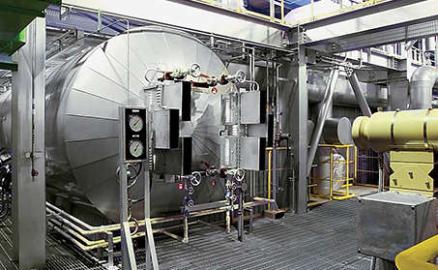
▲ Click to start the video. ( no audio )
Steam Turbine Generator 7
Steam turbine generators are facilities that convert high-temperature, high-pressure steam produced by boilers into electrical energy.
The generated electricity is used within the incineration plant and by public use facilities, and the remainder is then sold to electricity utilities.
It is necessary to improve the combustion efficiency of incineration plants in order to increase the จำนวน of electricity generated by steam turbine generators.
เป็นไปได้ In order to achieve this, Yokohama City requests citizens to wring as much moisture ข้างนอก of household waste as and to make sure that twigs and other foliage pruned แบบ trees and plants are well dried before they are submitted for collection.
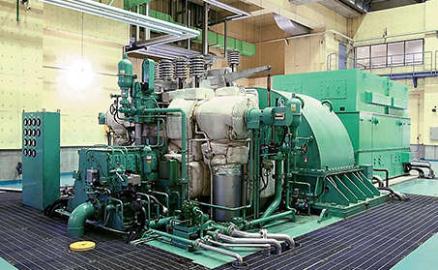
▲ Click to start the video. ( no audio )
Central Control Room 8
The waste incineration plant operates ceaselessly on a 24-hour basis.
Because of this, the operators in the Central Control Room oversee the operation and monitoring of the incineration plant 24-hours of every day.
The images taken by cameras installed at various locations throughout the incineration plant are displayed on LCD monitors for surveillance purposes.
The monitors in front of the operators displays temperature, pressure, exhaust gas density and other data in the real time. The on-site อุปกรณ์ที่ติดมา is monitored and operated remotely with automatic computer control and manual operations in accordance with the situation to ensure that optimal incineration is being carried ข้างนอก at all times.
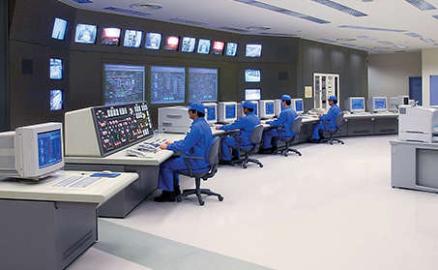
▲ Click to start the video. ( no audio )
★ Waste Disposal Flow
▲ Click to start the video. ( no audio )
การสอบถามที่หน้านี้
หน่วยงานการหมุนเวียนทรัพยากรแผนกสิ่งปลูกสร้างการจัดการอย่างเหมาะสม Planning Department
โทรศัพท์: 045-671-2518
โทรศัพท์: 045-671-2518
เครื่องแฟกซ์: 045-664-9490
หมายเลขอีเมล: sj-shisetsu@city.yokohama.lg.jp
ID หน้า: 813-787-640









